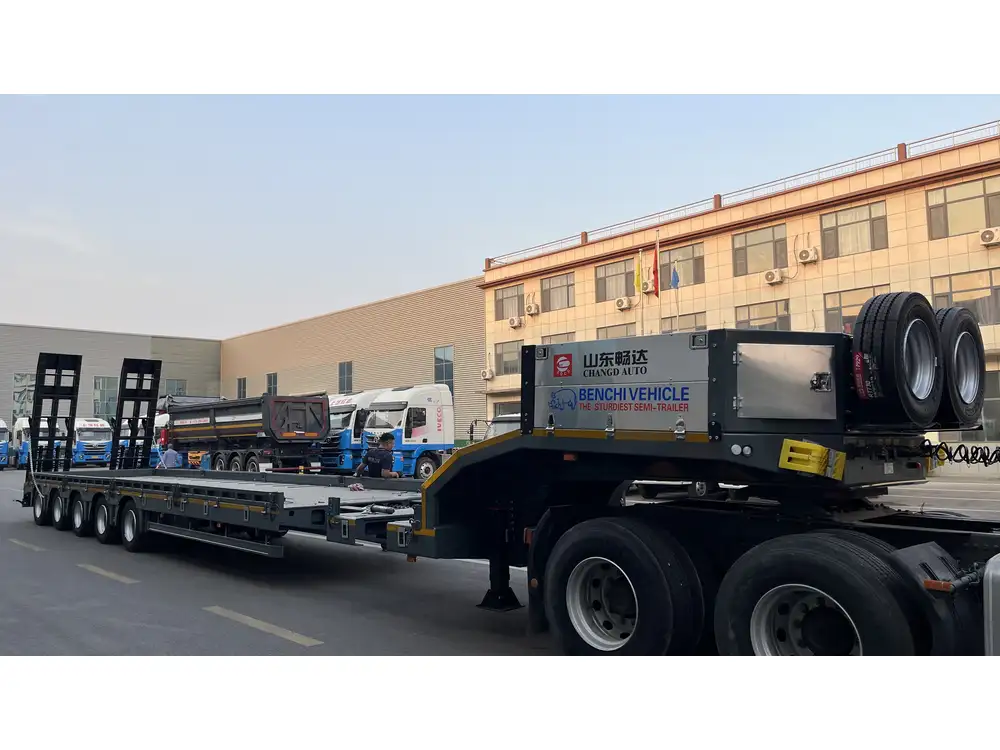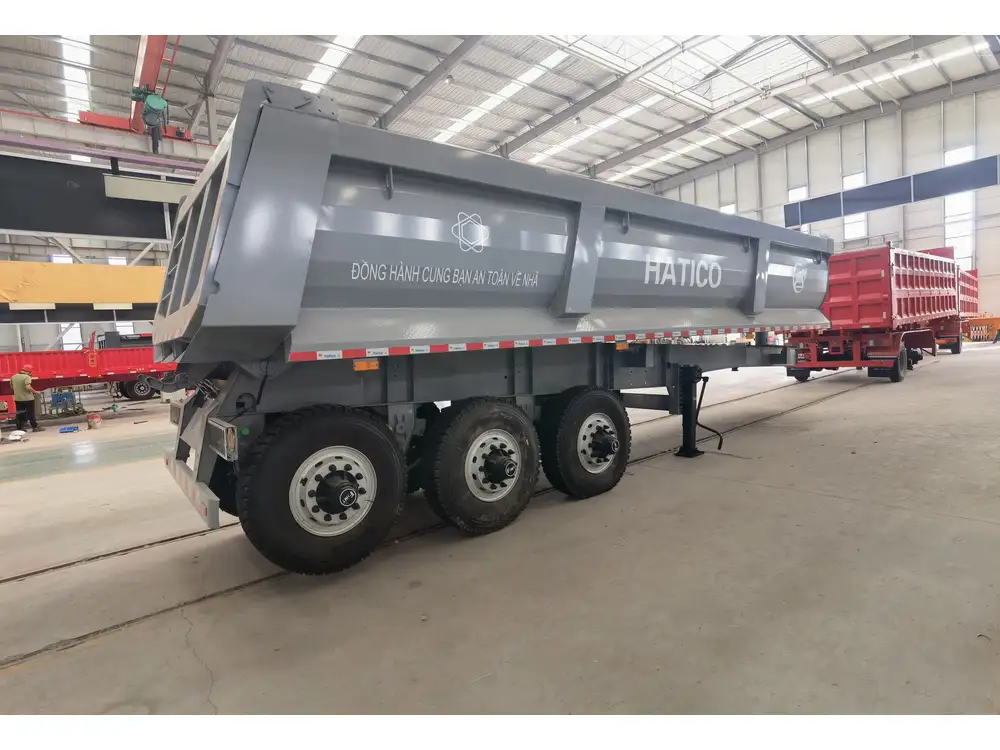Flatbed trailers play a pivotal role in the transportation industry, delivering goods ranging from construction materials to oversized equipment. The versatility they offer is unmatched; however, knowing how to effectively secure cargo is critical to ensuring safety and compliance during transit. In this article, we delve deep into the methodologies and best practices for holding cargo in a flatbed trailer, designed for those seeking expert insights into trailer load security.
Understanding Flatbed Trailers
Types of Flatbed Trailers
Flatbed trailers come in various types, each tailored for specific hauling needs:
| Type | Description |
|---|---|
| Standard Flatbed | A simple flat platform without sides or a roof. |
| Step Deck (Drop Deck) | Lowered deck height for taller cargo. |
| Extendable Flatbed | Can be extended for oversized loads. |
| Lowboy Trailer | Designed for heavy and bulky equipment, with a low deck height. |

Key Features of Flatbed Trailers
- Versatility: Suitable for various types of cargo, including machinery, lumber, and building materials.
- Accessibility: Easily loaded and unloaded from all sides.
- Adaptability: Many trailers come equipped with various tie-down points and accessories.
Importance of Securing Cargo
Improperly secured cargo not only poses a significant safety risk but can also lead to financial losses due to damages. Additionally, securing loads improperly may result in violations of federal regulations, potentially leading to fines and legal repercussions. Here’s why it’s essential to ensure that your cargo is appropriately secured:
- Safety Risks: Unsecured cargo can shift during transit, leading to accidents.
- Regulatory Compliance: Adhering to regulations such as those from the Federal Motor Carrier Safety Administration (FMCSA) is critical.
- Preservation of Goods: Properly securing your cargo helps maintain its condition.
Common Risks of Unsecured Loads
- Shifting Cargo: Can lead to loss of control or accidents.
- Falling Objects: Potentially hazardous for other road users.
- Legal Penalties: Possible citations for not adhering to safety standards.

Best Practices for Holding Cargo in a Flatbed Trailer
Step 1: Assessing the Load
Before you begin the loading process, it’s essential to assess the load you are dealing with:
- Weight Distribution: Ensure the weight is evenly distributed across the trailer to maintain balance.
- Cargo Size: Understand the dimensions and shape of the cargo, as this impacts how you secure it.
- Load Compatibility: Check if the cargo is compatible with other loads being transported.
Step 2: Using Proper Securing Equipment
To secure cargo effectively, use the following types of securing equipment:
| Equipment Type | Purpose |
|---|---|
| Ratchet Straps | Provides tension and tightness to secure cargo. |
| Chains and Binders | Stronger alternative for heavier loads. |
| Tarps | Protects cargo from environmental elements. |
| Dunnage | Cushions and supports cargo, creating stability. |

Step 3: Effective Loading Techniques
Loading cargo onto a flatbed trailer requires a strategic approach. Here are some techniques to consider:
- Load from the Front: Load heaviest items on the front.
- Use Center Gravity: Ensure heavy loads are placed near the center to promote balance.
- Form a Secure Stack: If stacking items, smaller ones should be on top of larger, sturdier pieces.
Step 4: Securing the Cargo
Once the cargo is loaded, securing it properly is crucial to prevent movement during transit. The following methods can be employed:
Tie-Down Techniques
Use Ratchet Straps:
- Attach them to the D-rings or stake pockets of the flatbed.
- Adjust the tension to eliminate slack without over-tightening and damaging the cargo.
Utilize Chains and Binders:
- For heavier equipment, chains provide more holding capacity.
- Use a binder to secure the chains tightly.
Employ Edge Protectors:
- Place edge protectors where straps or chains contact the cargo to prevent damage.

Tarping Techniques
Choose the Right Tarp:
- Select a tarp that adequately covers the cargo based on its dimensions.
Secure the Tarp:
- Use rope or bungee cords to tie down the tarp securely to the trailer.
- Ensure there are no gaps that may allow wind or rain to access the cargo.
Step 5: Inspect and Adjust
After securing the load, perform an inspection:
- Check Tie-Downs: Ensure all tie-downs are secure and adjusted for any slack.
- Inspect for Movement: Gently shake the load to ascertain that there’s no shifting or movement.
- Recheck During Transit: Conduct periodic checks during long hauls for added security.
Legal Considerations for Load Security
Cargo securement is not just an operational concern; it is also a legal requirement. Here are some regulations to keep in mind:

Federal Motor Carrier Safety Administration (FMCSA) Regulations
- 49 CFR Part 393.100-393.136: Outlines specific tie-down requirements. For example:
- For loads weighing less than 5,000 pounds, at least one tie-down is required for every 10 feet of cargo.
- Proper securement of cargo must be tested under dynamic conditions.
State and Local Regulations
- Be aware of specific state regulations, as they can vary greatly.
Penalties for Non-Compliance
- Fines can be issued for failure to secure cargo appropriately, ranging from minor infractions to severe violations.

Advanced Tips for Expert Load Security
For seasoned trailer operators, additional strategies may be beneficial:
- Overlength and Overwidth Permits: For oversized loads, ensure you have the necessary permits in place to transport.
- Communication with Drivers: If multiple drivers are involved in staging and transporting, effective communication is essential to ensure practices are followed across the board.
- Investing in Training: Continuously train personnel on best practices and updates to safety regulations.
- Utilizing Technology: Load monitoring systems can help in acquiring real-time data about the status of your cargo during transit.
Conclusion: The Takeaway
In the world of flatbed trailer transportation, securing your cargo properly is paramount. The safety of not just your cargo, but also your drivers and other road users relies heavily on understanding and implementing effective securing techniques. By adhering to best practices, regular inspections, and legal requirements, you can ensure that your loads arrive at their destinations safely and efficiently.
Remember, the stakes are high when it comes to cargo transport, but with the right knowledge and practices in place, success is within reach. Elevate your operational efficiency and safety protocols today, ensuring peace of mind in every haul you undertake.



